Forex trading can be an exciting and potentially lucrative venture, but it's essential to approach it with a well-defined risk management strategy. One of the key aspects of risk management in forex trading is calculating the risk to reward ratio. By understanding this ratio, traders can make informed decisions that help optimize their trading outcomes. In this article, we will explore the concept of risk to reward ratios and provide step-by-step guidance on how to calculate them effectively.
1. Introduction to Risk to Reward Ratios
In forex trading, the risk to reward ratio represents the potential profit of a trade compared to the potential loss. It is a fundamental concept that helps traders assess the viability and profitability of their trades. By understanding the risk to reward ratio, traders can determine whether a trade is worth taking or if the potential reward justifies the potential risk.
2. Importance of Risk to Reward Ratios in Forex Trading
Risk to reward ratios play a crucial role in maintaining a balanced and sustainable trading approach. By calculating this ratio, traders can assess the potential risk of a trade and compare it to the potential reward. This assessment allows traders to make informed decisions and avoid trades that have unfavorable risk to reward ratios. A favorable risk to reward ratio is essential for consistent profitability in forex trading.
3. Calculating Risk to Reward Ratios
To calculate the risk to reward ratio, follow these steps:
Step 1: Determine the Entry Point
Identify the price level at which you plan to enter the trade. This could be based on technical analysis, fundamental analysis, or a combination of both. The entry point should be determined based on your trading strategy and the market conditions.
Step 2: Define the Stop Loss Level
Set a stop loss level, which is the price at which you will exit the trade if it moves against you. The stop loss helps limit your potential loss on the trade and is typically placed below a support level or above a resistance level, depending on the direction of your trade.
Step 3: Set the Take Profit Level
Determine the price level at which you will take your profits and exit the trade. The take profit level should be based on your analysis and trading strategy, aiming for a realistic and achievable target.
Step 4: Calculate the Risk to Reward Ratio
Once you have determined the stop loss and take profit levels, you can calculate the risk to reward ratio. The ratio is calculated by dividing the potential reward (the difference between the entry point and take profit level) by the potential risk (the difference between the entry point and stop loss level). The resulting value represents the risk to reward ratio.
4. Factors to Consider when Analyzing Risk to Reward Ratios
When analyzing risk to reward ratios, it's important to consider the following factors:
1. Market Volatility
Market volatility can impact the risk to reward ratio. Highly volatile markets may require wider stop loss levels, which can affect the risk to reward ratio. It's important to adapt your risk management strategy based on the prevailing market conditions.
2. Timeframes
Different timeframes can have varying risk to reward ratios. Shorter timeframes may offer smaller potential rewards but also have tighter stop loss levels. Longer timeframes may provide larger potential rewards but require wider stop loss levels. Choose the timeframe that aligns with your trading goals and risk tolerance.
3. Trading Strategy
Each trading strategy has its own risk to reward characteristics. Some strategies aim for higher risk to reward ratios, while others focus on higher win rates with lower risk to reward ratios. Understand your trading strategy and its associated risk to reward profile to make informed decisions.
5. Examples of Risk to Reward Ratios
Let's consider a few examples to better understand risk to reward ratios in forex trading:
Example 1: EUR/USD Trade
Entry Point: 1.2000
Stop Loss Level: 1.1950
Take Profit Level: 1.2100
Potential Reward: 1.2100 - 1.2000 = 100 pips
Potential Risk: 1.2000 - 1.1950 = 50 pips
Risk to Reward Ratio: 100/50 = 2:1
Example 2: GBP/JPY Trade
Entry Point: 155.00
Stop Loss Level: 154.50
Take Profit Level: 156.50
Potential Reward: 156.50 - 155.00 = 150 pips
Potential Risk: 155.00 - 154.50 = 50 pips
Risk to Reward Ratio: 150/50 = 3:1
Example 3: AUD/CAD Trade
Entry Point: 0.9500
Stop Loss Level: 0.9440
Take Profit Level: 0.9580
Potential Reward: 0.9580 - 0.9500 = 80 pips
Potential Risk: 0.9500 - 0.9440 = 60 pips
Risk to Reward Ratio: 80/60 = 1.33:1
6. Managing Risk to Reward Ratios in Forex Trading
To effectively manage risk to reward ratios in forex trading, consider the following tips:
Set realistic take profit levels based on your analysis and trading strategy.
Adjust stop loss levels to protect your capital and limit potential losses.
Continuously monitor the market conditions and adjust your risk to reward ratios accordingly.
Maintain discipline and stick to your risk management plan even during periods of market volatility.
Summary
Investing in the Forex market can be a risky business, but one of the most important tools to help manage risk is the risk-to-reward ratio. This ratio is used to measure the amount of potential reward an investor can expect for every dollar they invest in a currency pair. By understanding how risk-to-reward ratios work, you can make more informed decisions when trading in the Forex market. In this article, we'll discuss how risk-to-reward ratios are used in Forex trading and provide some tips on how to use them effectively. We'll also explore how to calculate the ratio and how it can be used to increase your profits.
By the end, you'll have a better understanding of how risk-to-reward ratios work and how to use them to your advantage when trading in the Forex market. The basic formula for calculating a risk to reward ratio is: Risk / Reward. Risk is the amount of money that you are risking on a trade, while reward is the amount of money you are trying to make on that same trade. For example, if you are risking $50 on a trade and looking to make $100, then your risk to reward ratio would be 1:2.This means that for every dollar you are risking, you have the potential to make two dollars. The purpose of using a risk to reward ratio is to ensure that you are taking on an appropriate amount of risk for the amount of reward you are seeking. By understanding how much money you are risking in comparison to the amount you are hoping to make, you can make sure that your trades are well-balanced and not too risky. It is important to note that there is no one “correct” risk to reward ratio.
Different traders may have different risk tolerances, and therefore, different risk/reward ratios. Some traders may be comfortable with a 1:1 ratio, while others may prefer a 1:3 or even 1:4 ratio. It is ultimately up to the trader to decide what ratio works best for them and their trading style. When it comes to forex trading, having an effective risk/reward strategy can be essential for success. A good risk/reward strategy should be tailored to a trader’s individual goals and risk tolerance.
By understanding and utilizing risk/reward ratios, traders can have better control over their trades and limit their downside risk. In addition to understanding how to calculate risk/reward ratios, traders should also understand how they can use these ratios to their advantage. Risk/reward ratios can be used as a way of managing risk by setting predetermined stop-loss points and take-profit points. By setting predetermined levels for when they will exit a trade, traders can reduce their exposure to risk and maximize their potential profits. By understanding and utilizing risk/reward ratios, traders can take advantage of the potential upside while minimizing their downside risks. Having an effective risk/reward strategy can be a key component of any successful forex trading strategy.
Using Risk/Reward Ratios in Forex Trading
Once you understand how to calculate and use risk/reward ratios, you can begin incorporating them into your forex trading strategy.When setting up your trades, it is important to take into account both your potential losses and potential gains. To ensure that your trades are well-balanced and not too risky, you should aim for a risk/reward ratio of at least 1:2.This means that for every dollar you are risking on a trade, you should have the potential to make two dollars or more. Additionally, it is important to remember that no matter what your risk/reward ratio is, there is still no guarantee of success. Even with a low risk/high reward ratio, there is still no guarantee that your trades will be profitable.
Risk management
is an important part of any trading strategy. Risk/reward ratios are an important concept in forex trading and can help traders find success in the markets. By understanding how these ratios work and how they can be applied to forex trading strategies, traders can gain an edge over other investors.However, it is important to remember that no matter what your risk/reward ratio is, there is still no guarantee of success. It is important to remember that risk management is an essential part of successful forex trading and that risk/reward ratios should be used in combination with other strategies to maximize profits and minimize losses.
Calculating risk to reward ratios is a vital component of successful forex trading. By understanding the potential risks and rewards of a trade, traders can make informed decisions that align with their risk tolerance and trading strategy. Remember to adapt your risk to reward ratios based on market conditions and continuously evaluate and refine your risk management approach.
Q1: Can a high risk to reward ratio guarantee profitability in forex trading?
A1: While a high risk to reward ratio can increase the potential for profitability, it does not guarantee it. Other factors such as market conditions, trading strategy, and risk management skills also play crucial roles in achieving consistent profitability.
Q2: Should I always aim for a risk to reward ratio of 3:1 or higher?
A2: The ideal risk to reward ratio may vary depending on your trading strategy and risk appetite. It's important to choose a ratio that aligns with your trading goals and provides a good balance between potential rewards and risks.
Q3: Can risk to reward ratios be applied to all trading instruments?
A3: Yes, risk to reward ratios can be applied to various trading instruments, including forex, stocks, commodities, and cryptocurrencies. The principles of risk management remain consistent across different markets.
Q4: Should I adjust my risk to reward ratios based on market volatility?
A4: Yes, market volatility can influence the appropriate risk to reward ratios. During highly volatile periods, wider stop loss levels may be necessary to account for increased price fluctuations.
Q5: Is it possible to have a risk to reward ratio below 1:1?
A5: While it's generally advisable to aim for risk to reward ratios above 1:1, some trading strategies, such as scalping, may involve smaller ratios. These strategies rely on high win rates to offset the lower risk to reward ratios.


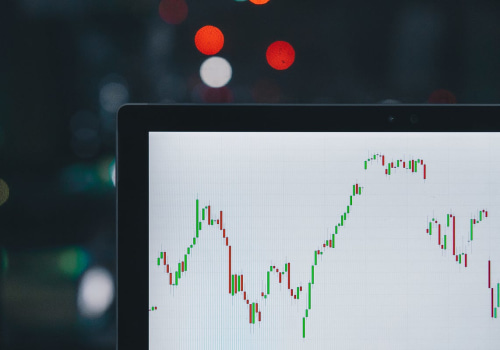

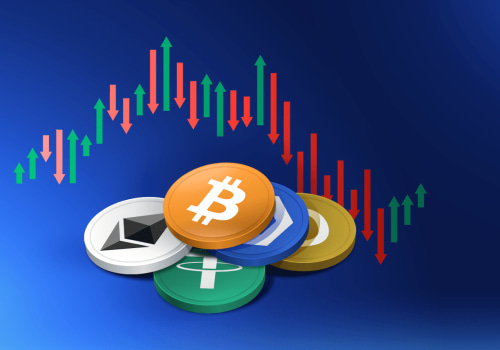


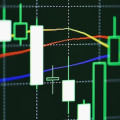

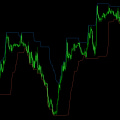

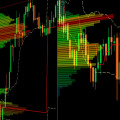
Leave Reply